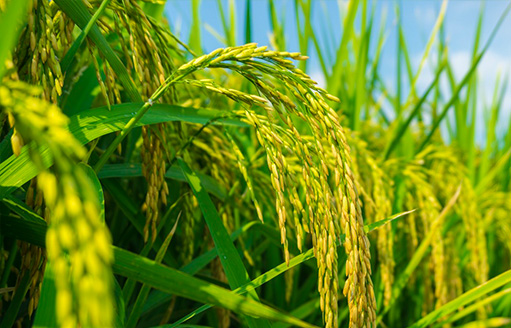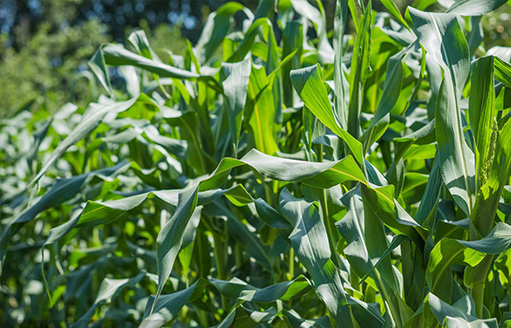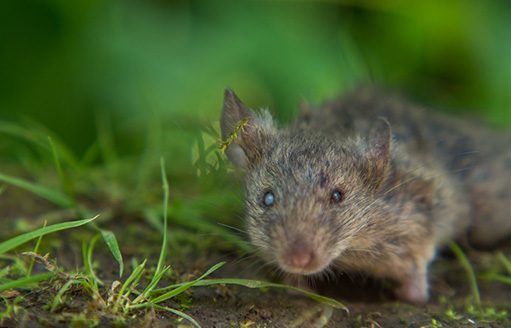In order to strengthen the production management of summer and autumn tea gardens and ensure the production of summer and autumn tea and the next spring tea, the planting Management Department of the Ministry of Agriculture and Rural Affairs, together with the National Agricultural Technology Extension Service Center, the tea Expert Guidance group of the Ministry of Agriculture and Rural Affairs, and the national tea industry technical system, put forward the technical guidance opinions for summer and autumn tea production in 2024.
1. strengthen the management of tea garden fertilizer
(1) Tea garden topdressing
1.Tea tree root topdressing.Summer tea topdressing should be carried out after spring tea, autumn tea topdressing should be carried out after summer tea. Put into production tea gardens generally apply 15-20 kg urea or 20-30 kg of 18-8-12 (N-P2O5-K2O) formula of tea tree special compound fertilizer per mu, and high-yield tea gardens can be appropriately increased. Mature tea gardens should be fertilized in trenches under the vertical crown edge, trenches 10-15 cm deep is appropriate, no spreading; In young tea gardens, 1-2-year-old tea trees should be fertilized at 5-10 cm away from the roots, and 3-4 year-old tea trees should be fertilized at 10-15 cm away from the roots. The flat tea garden can be fertilized on one or both sides of the tea rows. Slope (terraced) tea gardens should be fertilized on one side above the tea rows to prevent fertilizer loss.
2.Tea leaf topdressing.When the root fertilization effect is not good, the leaf topdressing can be applied according to the need. Generally, after the end of each round of tea season and before the next round of shoot germination, it is advisable to spray before 10 am on sunny days, after 4 PM or on cloudy days, and avoid spraying before rain. When applying, electrostatic sprayer can be used to evenly spray on the back or both sides of tea leaves, or agricultural plant protection drone can be used to spray according to the flight height of 1.5 meters.
Leaf topdressing should choose water-soluble urea, amino acid water-soluble fertilizer, humic acid leaf fertilizer and biogas slurry fertilizer, among which, water-soluble urea leaf fertilizer can be 5% urea concentration, amino acid leaf fertilizer with 50 mg of effective ingredients per mu is appropriate, humic acid leaf fertilizer with 2% concentration of 15 kg of mu dosage spray, biogas slurry fertilizer with effective nitrogen concentration of about 2% is appropriate.
(2) Application of base fertilizer
Base fertilizer application should be completed in October, the first choice of cake fertilizer, compost and manure and other organic fertilizers, organic fertilizer can also be combined with fertilizer application. Base fertilizer (pure nitrogen) application amount to reach the annual fertilizer amount of 30-40%, generally per mu of livestock manure organic fertilizer 1-2 tons or cake fertilizer 200-300 kg, per mu can be combined with calcium magnesium phosphate fertilizer 25 kg, potassium sulfate 5-10 kg, after mixing the ditch 15-20 cm or combined deep cultivation application. When applying base fertilizer in young tea gardens, direct contact with tea roots should be avoided.
(3) Green manure planting
Green manure such as rat grass can be planted in young tea gardens and mature tea gardens with large spacing between tea rows and high soil exposure to increase soil organic matter, improve soil permeability and inhibit weed growth. Mousegrass is generally sown in September in the row or broadcast, the sowing amount per mu 1-2 kg, grass seed and tea tree spacing should be greater than 30 cm. Before sowing, grass seeds and fine sand can be mixed at a ratio of 1:10, and thin soil can be properly covered after sowing to prevent grass seeds from drying. It should be sown before the rainy season, and proper irrigation should be required in case of long-term drought after sowing. Application of nitrogen fertilizer (pure nitrogen) 8-12 kg per mu in February of the next year to promote growth. Mousegrass dies in June every year after setting seeds, and can be resown in a small amount in the next year according to the emergence of seedlings.
(4) Reasonable farming
After the end of summer tea, the tea garden should be lightly cultivated, with a depth of 5-10 cm. In the tea garden where autumn tea is harvested, shallow ploughing should be carried out again after the end of autumn tea. Pay attention to avoid farming in continuous high temperature and dry weather.
2. strengthen the prevention and control of pests and grasses
(1) summer and autumn high incidence of pest control technology
In summer and autumn, grey tea inchworms, tea caterpillars, tea green leafhopper and other pests are serious. Comprehensive measures should be taken to strengthen pest control, reduce the insect density in the field, and avoid serious pest occurrence. When necessary, efficient and safe agents should be applied for emergency control. Tea gardens that meet the picking standards should be picked frequently in batches in time, destroy the spawning sites of pests, and take away some eggs and young nymphs with buds and leaves. For lepidoptera pests, narrow-wave LED insecticide lamps and sex attractants can be used in large areas during the adult blooming period to accurately trap and kill, so as to reduce the number of eggs in the field. Tea caterpillars can be controlled by releasing parasitic wasps during the blooming period of adult caterpillars. The young green leafhopper should be killed by hanging yellow-red double-color trap before the autumn rainy season.
In tea gardens where insect infestation is particularly serious, water-soluble pesticides can be selected for emergency control according to different insect infestation conditions. Before the third age of grey tea geometrid, tea geometrid and tea caterpillar larvae, efficient biological pesticides (such as brevibacterium) or efficient and safe chemical pesticides (such as cypermethrin, megamuronil, amamectin benzoate, etc.) can be used for emergency control. Biocesticides such as azadirachin and cineolin can be used for emergency control, as well as highly effective and safe chemical pesticides such as fenacil, dipropionate, zolidamide and indacarb. The application of pesticides in the tea garden should be carried out in accordance with the relevant requirements of the safety interval of the pesticide instruction manual.
(2) Spring pest prevention and control technology in autumn
The high incidence of green bug and tea net bug in spring in some tea areas seriously affected spring tea production, and prevention and control measures should be implemented in autumn.
1.Green bug prevention and control.From September to October, sex attractant and color plate were used to monitor the time of green bug entering the tea garden. After the green bug entered the garden, combined with the control of tea leaf hoppers, 10% bifenthrin was sprayed to tea trees and surrounding weeds in time, at an interval of 7-10 days, 2-3 times in succession.
2.Tea net bug prevention and control.Matrine and azadirachtin can be used for biological control. When serious occurrence occurs, it can be combined with bifenthrin and cypermethrin to control other pests. Before application, it is advisable to prune the side branches of the tea tree to enhance the penetration of the liquid so that the liquid can evenly cover the leaf surface of the tea tree.
(3) Weed control technology in tea garden
It can be combined with tea farming, weeding by manual or mechanical means, and the removed weeds are buried deep in the soil, usually weeding once a month from June to August. In order to reduce the occurrence of weeds in the coming year, it is advisable to cultivate and weed the tea garden before flowering in autumn. The number of tillage and weeding can be appropriately increased in young tea gardens. In young tea plantations and mature tea plantations with low canopy coverage, grass repellent cloth can be laid or green manure plants such as rat thatch and white clover can be planted between rows to control weeds.







